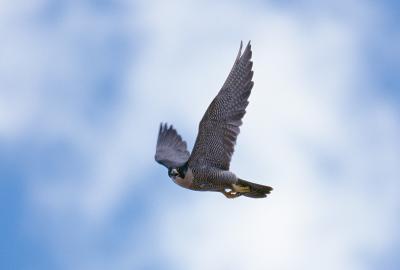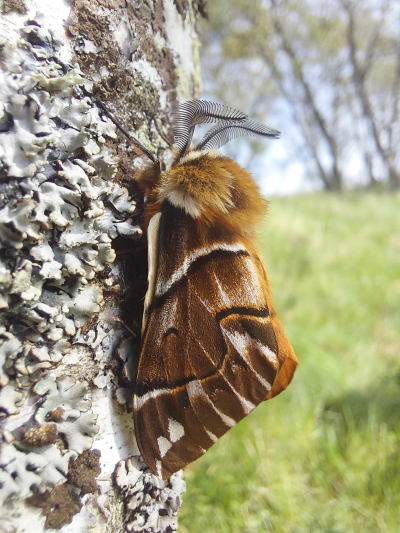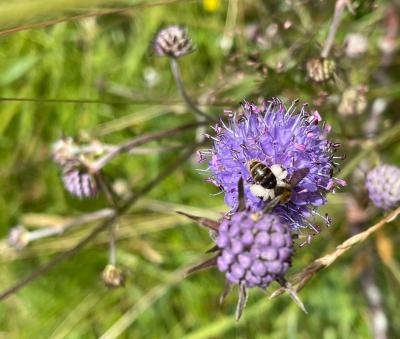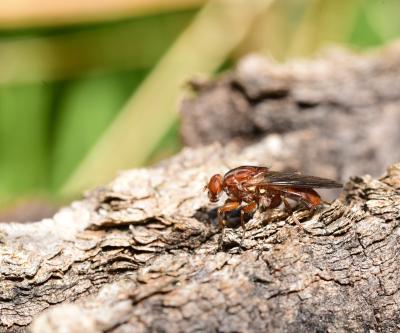Freshwater pearl mussel
Margaritifera margaritifera
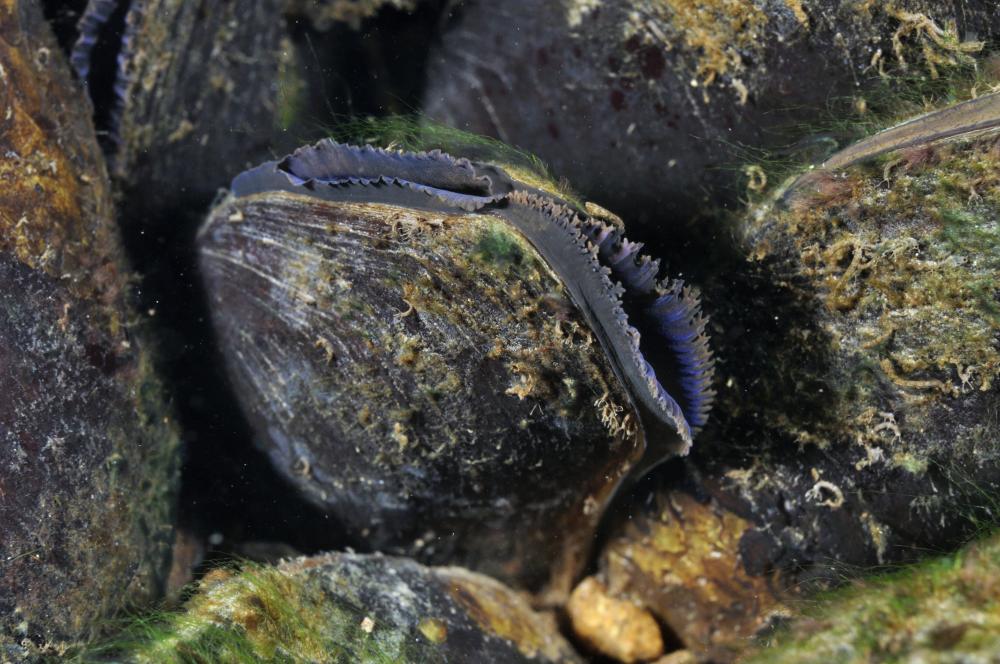
The freshwater pearl mussel is a type of mollusc which lives on riverbeds. They can live for over 100 years, making them one of the longest living invertebrates.
Factsheet
Lifespan: Up to 140 years
Best time to spot: Early summer, when water levels are low
Freshwater pearl mussels are bivalves, meaning they have two shells, which can be dark brown or black. The shells have a pearly white interior and are very close in appearance to common marine mussels. However, freshwater pearl mussels grow much larger, up to 140mm, or approximately the size of a hand, and unlike marine mussels, they are not considered to make a tasty meal for humans.
This species resides on riverbeds, specifically in rivers that are clean, fast-flowing and low in calcium. Freshwater pearl mussels like to bury themselves, partially or fully, under coarse sediment and fine sand. Burying deeper provides greater protection in adverse weather conditions, such as flooding, and helps them stay warmer in winter.
Freshwater pearl mussels draw in river water to feed, filling up on fine particles of organic matter. Over the course of the day, a freshwater pearl mussel may filter more water than a human uses in a shower - over 50 litres!
This filtration process cleans the river water, which benefits other species like eels, fish and otters. This has earned freshwater pearl mussels their status as a keystone species - higher numbers of freshwater pearl mussels tend to signify healthier rivers, and their removal would harm many other organisms.
Did you know?
The freshwater pearl mussel is a type of mollusc which lives on riverbeds. They can live for over 100 years, making them one of the longest living invertebrates.
Factsheet
Lifespan: Up to 140 years
Best time to spot: Early summer, when water levels are low
Freshwater pearl mussels are bivalves, meaning they have two shells, which can be dark brown or black. The shells have a pearly white interior and are very close in appearance to common marine mussels. However, freshwater pearl mussels grow much larger, up to 140mm, or approximately the size of a hand, and unlike marine mussels, they are not considered to make a tasty meal for humans.
This species resides on riverbeds, specifically in rivers that are clean, fast-flowing and low in calcium. Freshwater pearl mussels like to bury themselves, partially or fully, under coarse sediment and fine sand. Burying deeper provides greater protection in adverse weather conditions, such as flooding, and helps them stay warmer in winter.
Freshwater pearl mussels draw in river water to feed, filling up on fine particles of organic matter. Over the course of the day, a freshwater pearl mussel may filter more water than a human uses in a shower - over 50 litres!
This filtration process cleans the river water, which benefits other species like eels, fish and otters. This has earned freshwater pearl mussels their status as a keystone species - higher numbers of freshwater pearl mussels tend to signify healthier rivers, and their removal would harm many other organisms.
Did you know?
Freshwater pearl mussels have a symbiotic relationship with certain fish species, including salmon and trout. This means that both species work together to thrive in their environment. In their larval stage, freshwater pearl mussels live harmoniously on the gills of these fish species – typically in the summer months – before a temperature switch signals it’s time to release.
Sadly, freshwater pearl mussels are now on the brink of extinction. Many populations are ageing, with some of the youngest molluscs in these groups being 70 years old. This is because juveniles struggle in poorer habitat conditions. Declining fish numbers, illegal pearl hunting, poor water quality and overall habitat conditions have led to declining numbers.
In Scotland, freshwater pearl mussels are protected, meaning people must not wilfully disturb these creatures. This protection has been in place since 1981, but sadly it has not stopped everyone.
Historically, humans are responsible for massive declines in freshwater pearl mussel numbers. Across the centuries, ‘pearl fishers’ have left behind piles of opened shells in their search for the rare jewel, which was prized by nobility, the church and even Julius Caesar. It has been said that gaining control of the pearl market was one of the reasons the Romans invaded Britain.
As well as ensuring protection from humans, restoring the habitats of this species will play a key part in propelling population numbers up once again.
Need to know
Freshwater pearl mussels are a protected species.
- It is an offence to disturb, take, injure or kill them.
- In Scotland, it’s also illegal to possess freshwater pearl mussels or pearls collected since 1998, or to sell, or advertise them for sale, unless done so under licence from NatureScot.






